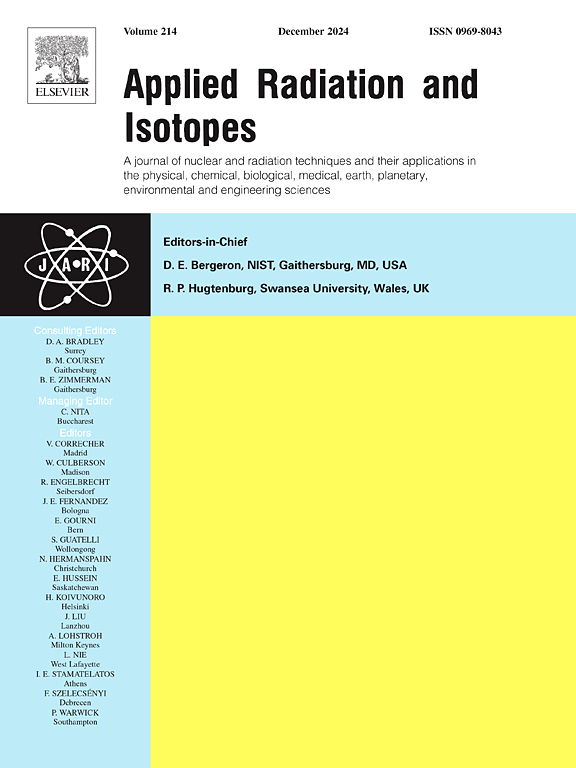纳米颗粒致敏剂在前列腺癌治疗中的应用:通过创新纳米技术提高放疗疗效:叙述性综述。
IF 1.6
3区 工程技术
Q3 CHEMISTRY, INORGANIC & NUCLEAR
引用次数: 0
摘要
对于男性局限性前列腺癌,放射治疗(RT)仍然是一种常见的治疗选择。尽管放射治疗已经取得了显著的成功,但在促进肿瘤组织的放射损伤的同时减少对健康组织的不良影响仍然是一个棘手的问题。被称为放射增敏剂的化学物质或药理学物质可以通过加速DNA损伤和间接产生自由基来增加对肿瘤细胞的杀伤作用。在所有改善放疗管理结果的方法中,金属纳米颗粒增强放疗用于前列腺癌患者治疗是一种独特的策略,在过去十年中引起了科学界的关注。目前大多数数据是基于靶向RT与金纳米颗粒,其中研究最多的材料。然而,一些新的材料也被用于临床前环境。本研究评估了前列腺癌组织的现有剂量学数据,以及可能对治疗方案和患者预后的未来影响,因为有必要在临床环境中进行进一步研究。本文章由计算机程序翻译,如有差异,请以英文原文为准。
“Nanoparticle-based sensitizers in prostate cancer treatment: Enhancing radiotherapy efficacy through innovative nanotechnology: Narrative review”
For men with localized prostate cancer, radiotherapy (RT) remains a common therapeutic option. Although radiotherapy has had significant success, it remains an intractable issue in promoting radiation damage to tumor tissue while reducing adverse effects on healthy tissue. Chemicals or pharmacological substances known as radiosensitizers can increase the killing effect on tumor cells by accelerating DNA damage and indirectly producing free radicals. Of all the approaches to improving RT management outcomes, metal nanoparticle-enhanced radiation for prostate cancer patient therapy is a unique strategy that has sparked scientific attention in the past decade. Most current data is based on targeted RT with gold nanoparticles, among the most studied materials. Nevertheless, several novel materials have also been employed in preclinical settings. This study assesses existing dosimetric data on prostate cancer tissue as well as the likely future influence on treatment options and patient outcomes since further research in a clinical setting is necessary.
求助全文
通过发布文献求助,成功后即可免费获取论文全文。
去求助
来源期刊

Applied Radiation and Isotopes
工程技术-核科学技术
CiteScore
3.00
自引率
12.50%
发文量
406
审稿时长
13.5 months
期刊介绍:
Applied Radiation and Isotopes provides a high quality medium for the publication of substantial, original and scientific and technological papers on the development and peaceful application of nuclear, radiation and radionuclide techniques in chemistry, physics, biochemistry, biology, medicine, security, engineering and in the earth, planetary and environmental sciences, all including dosimetry. Nuclear techniques are defined in the broadest sense and both experimental and theoretical papers are welcome. They include the development and use of α- and β-particles, X-rays and γ-rays, neutrons and other nuclear particles and radiations from all sources, including radionuclides, synchrotron sources, cyclotrons and reactors and from the natural environment.
The journal aims to publish papers with significance to an international audience, containing substantial novelty and scientific impact. The Editors reserve the rights to reject, with or without external review, papers that do not meet these criteria.
Papers dealing with radiation processing, i.e., where radiation is used to bring about a biological, chemical or physical change in a material, should be directed to our sister journal Radiation Physics and Chemistry.
 求助内容:
求助内容: 应助结果提醒方式:
应助结果提醒方式:


